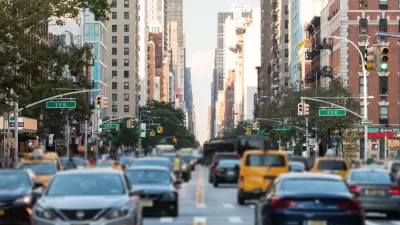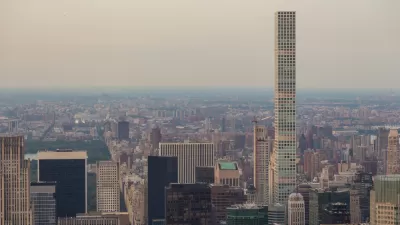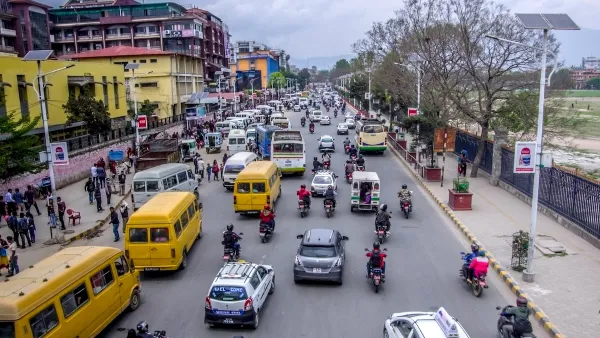Moving an 80,000-pound metal box means using energy, and elevators can account for 2-10% of a buildings energy use.

There are about 7.6 billion people on earth and, according to Smithsonian Magazine, those people take more than 7 billion elevator trips every day. That vertical movement costs energy and the need adds up quickly. "Newer elevators already incorporate green features such as LED lights, water soluble paint and recycled construction materials, but many companies have begun to explore a wide and somewhat outlandish array of alternatives to the traditional rope-and-pulley systems of a hundred years ago," Adrienne Bernhard reports for the Smithsonian Magazine.
An elevator can weigh 4 tons, consuming energy even when it's not in use. "In fact, elevators typically account for between 2 percent and 10 percent of a building’s energy use," Bernhard reports. But regenerative drive systems that reclaim some of the energy they use has cut into that energy cost for some new elevator designs. There are also machine room-less elevators, which allow for flat roofs, that are easier to use for solar power generation. "In 2017, Thyssenkrupp Elevator became the first company to retrofit an existing elevator to achieve net-zero energy," Bernhard writes.
FULL STORY: Elevators Are Going Green

Planetizen Federal Action Tracker
A weekly monitor of how Trump’s orders and actions are impacting planners and planning in America.

Map: Where Senate Republicans Want to Sell Your Public Lands
For public land advocates, the Senate Republicans’ proposal to sell millions of acres of public land in the West is “the biggest fight of their careers.”

Restaurant Patios Were a Pandemic Win — Why Were They so Hard to Keep?
Social distancing requirements and changes in travel patterns prompted cities to pilot new uses for street and sidewalk space. Then it got complicated.

Platform Pilsner: Vancouver Transit Agency Releases... a Beer?
TransLink will receive a portion of every sale of the four-pack.

Toronto Weighs Cheaper Transit, Parking Hikes for Major Events
Special event rates would take effect during large festivals, sports games and concerts to ‘discourage driving, manage congestion and free up space for transit.”

Berlin to Consider Car-Free Zone Larger Than Manhattan
The area bound by the 22-mile Ringbahn would still allow 12 uses of a private automobile per year per person, and several other exemptions.
Urban Design for Planners 1: Software Tools
This six-course series explores essential urban design concepts using open source software and equips planners with the tools they need to participate fully in the urban design process.
Planning for Universal Design
Learn the tools for implementing Universal Design in planning regulations.
Heyer Gruel & Associates PA
JM Goldson LLC
Custer County Colorado
City of Camden Redevelopment Agency
City of Astoria
Transportation Research & Education Center (TREC) at Portland State University
Camden Redevelopment Agency
City of Claremont
Municipality of Princeton (NJ)





























